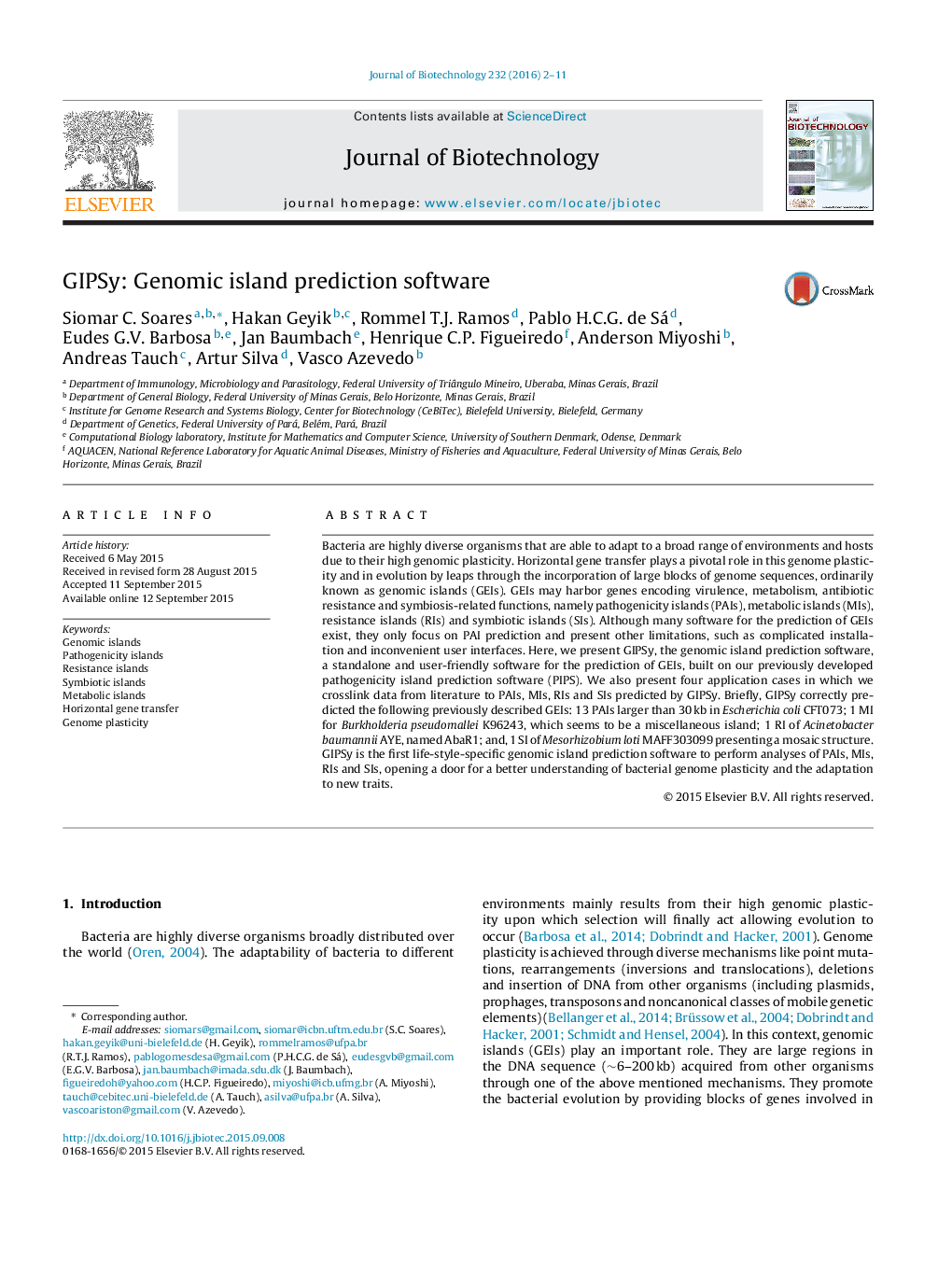| Article ID | Journal | Published Year | Pages | File Type |
|---|---|---|---|---|
| 22531 | Journal of Biotechnology | 2016 | 10 Pages |
•The first life-style-specific GEI prediction software to predict all classes of GEIs.•GIPSy predicted 13 pathogenicity islands of Escherichia coli CFT073.•GIPSy predicted 1 metabolic island of Burkholderia pseudomallei K96243.•GIPSy predicted 1 resistance island of Acinetobacter baumannii AYE.•GIPSy predicted 1 symbiotic island of Mesorhizobium loti MAFF303099.
Bacteria are highly diverse organisms that are able to adapt to a broad range of environments and hosts due to their high genomic plasticity. Horizontal gene transfer plays a pivotal role in this genome plasticity and in evolution by leaps through the incorporation of large blocks of genome sequences, ordinarily known as genomic islands (GEIs). GEIs may harbor genes encoding virulence, metabolism, antibiotic resistance and symbiosis-related functions, namely pathogenicity islands (PAIs), metabolic islands (MIs), resistance islands (RIs) and symbiotic islands (SIs). Although many software for the prediction of GEIs exist, they only focus on PAI prediction and present other limitations, such as complicated installation and inconvenient user interfaces. Here, we present GIPSy, the genomic island prediction software, a standalone and user-friendly software for the prediction of GEIs, built on our previously developed pathogenicity island prediction software (PIPS). We also present four application cases in which we crosslink data from literature to PAIs, MIs, RIs and SIs predicted by GIPSy. Briefly, GIPSy correctly predicted the following previously described GEIs: 13 PAIs larger than 30 kb in Escherichia coli CFT073; 1 MI for Burkholderia pseudomallei K96243, which seems to be a miscellaneous island; 1 RI of Acinetobacter baumannii AYE, named AbaR1; and, 1 SI of Mesorhizobium loti MAFF303099 presenting a mosaic structure. GIPSy is the first life-style-specific genomic island prediction software to perform analyses of PAIs, MIs, RIs and SIs, opening a door for a better understanding of bacterial genome plasticity and the adaptation to new traits.
